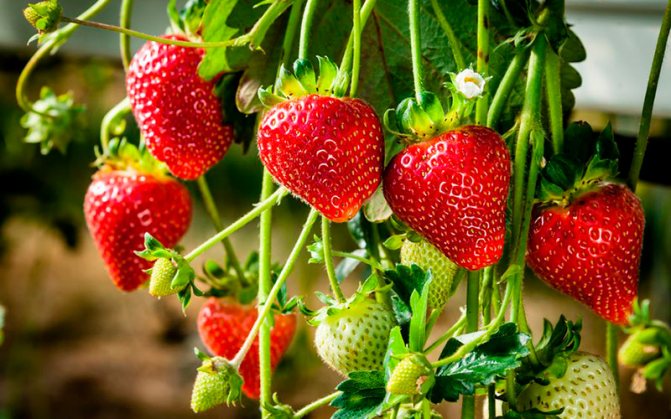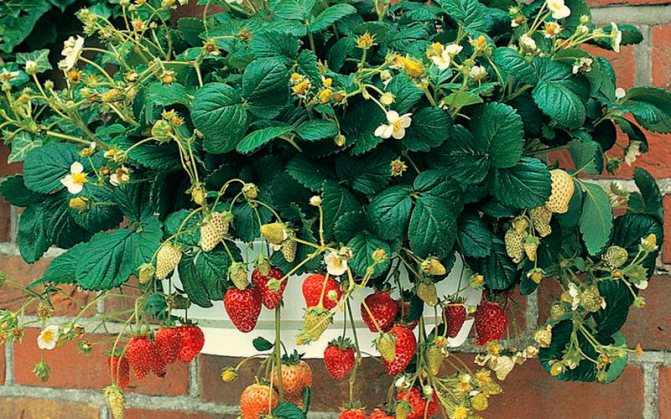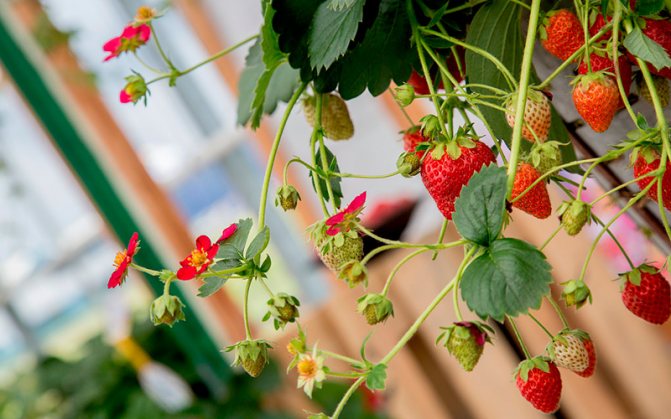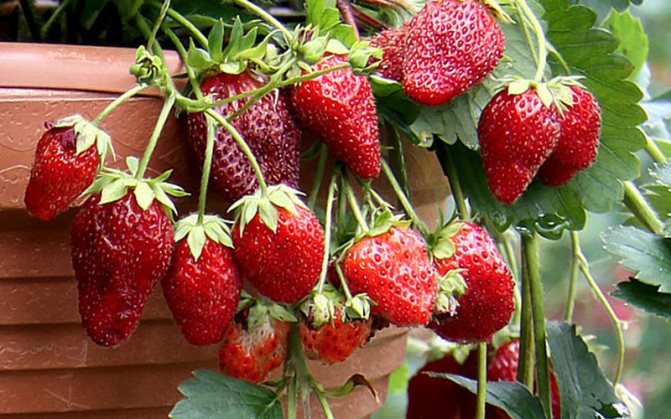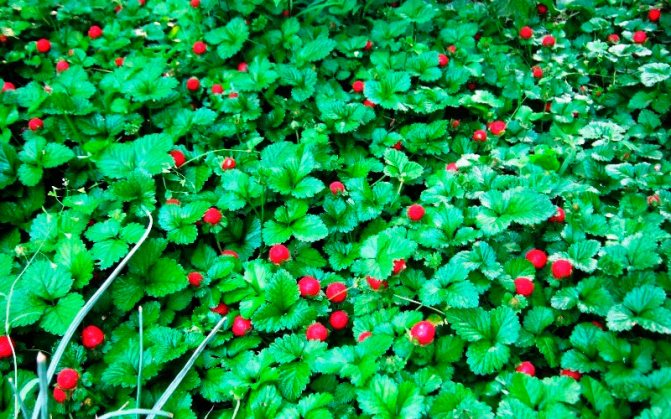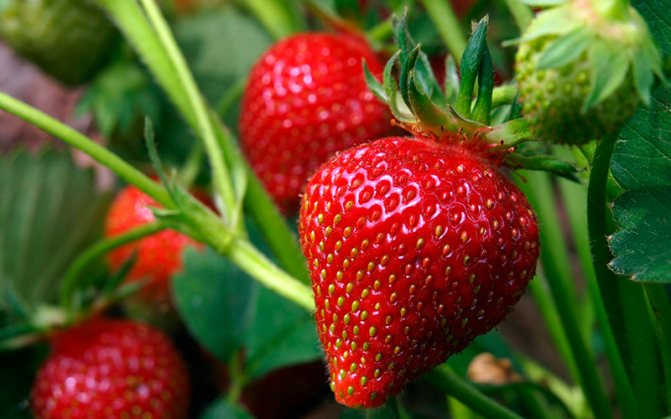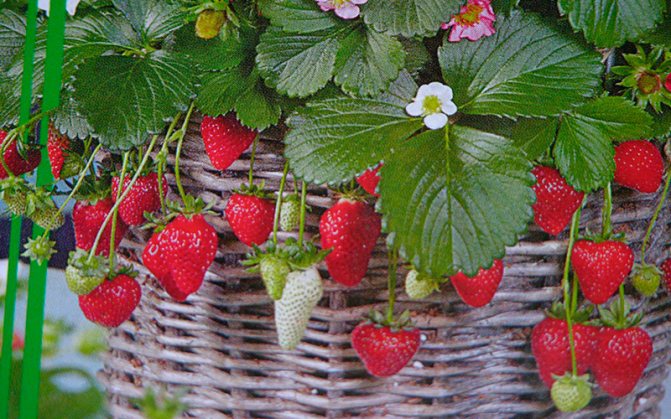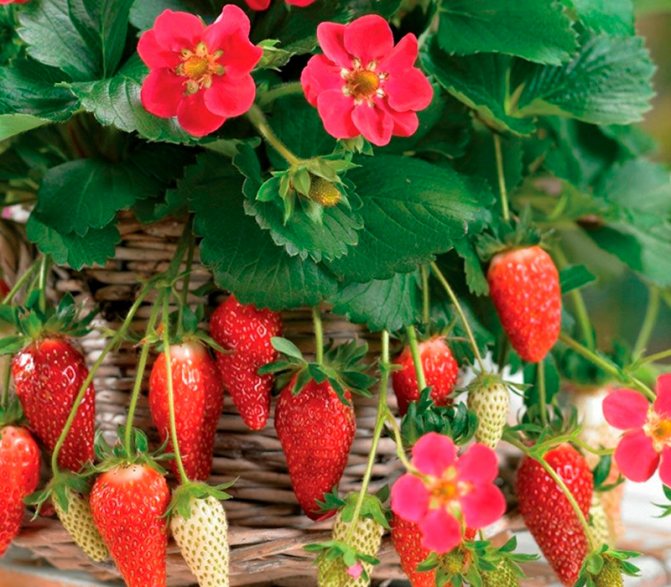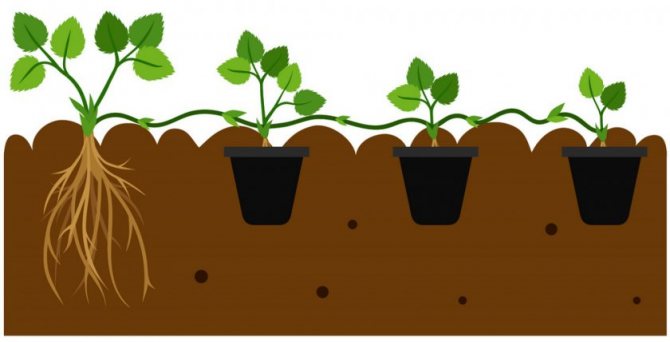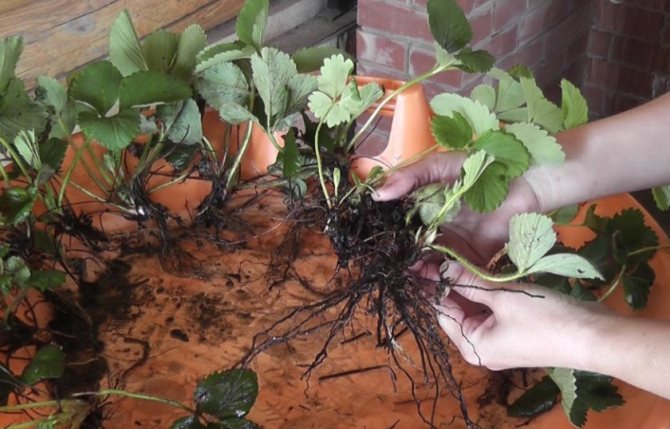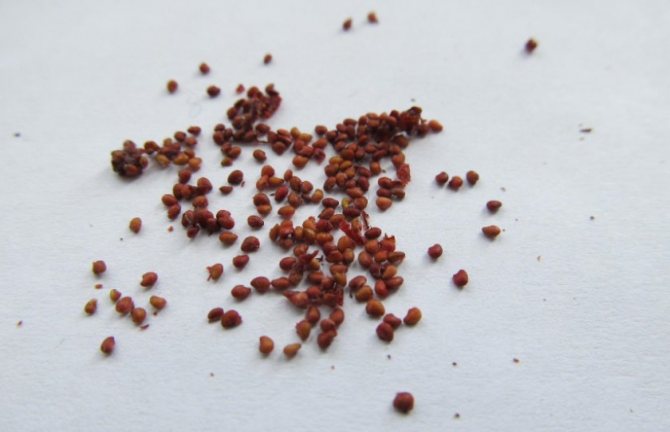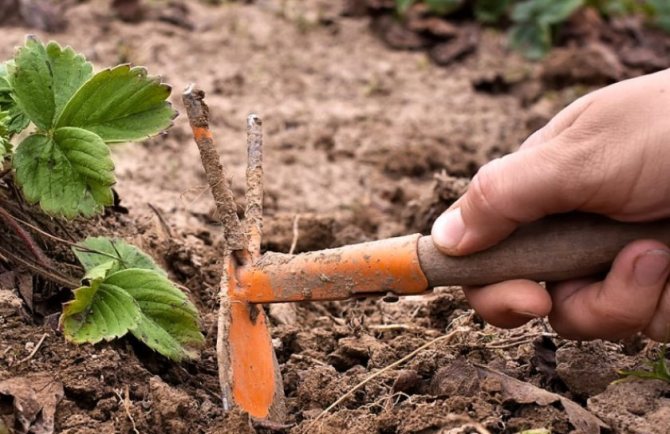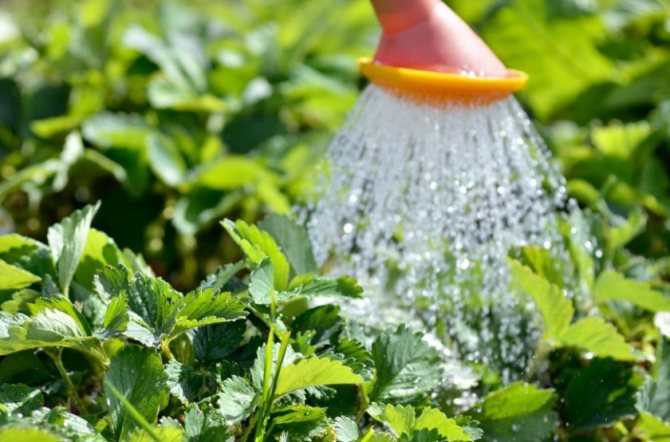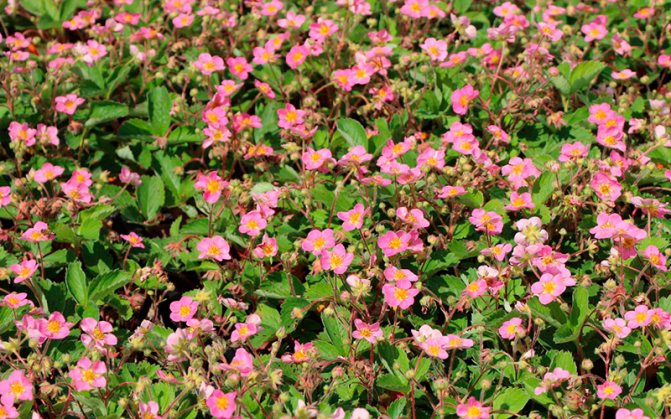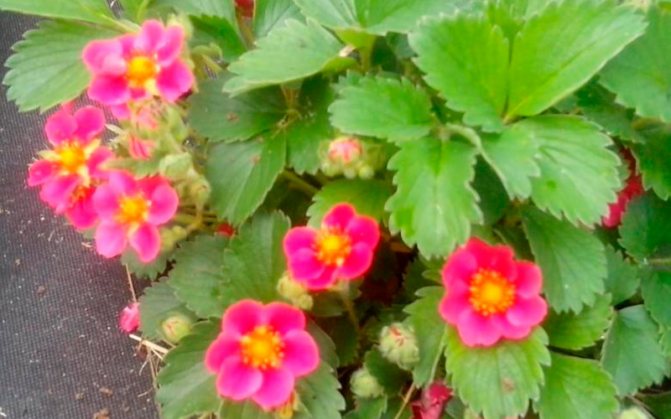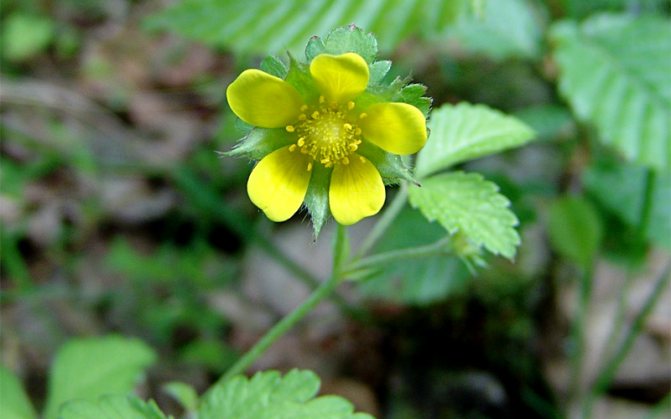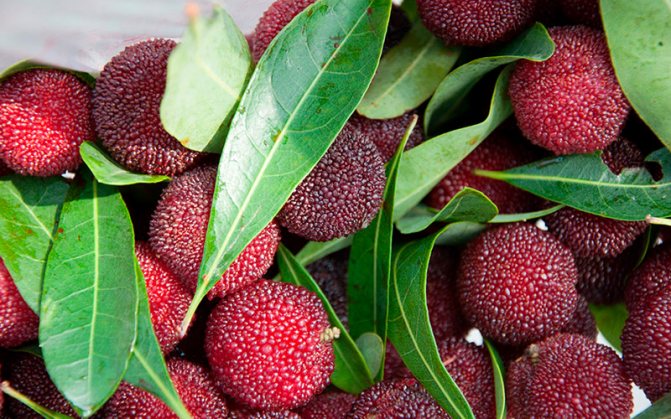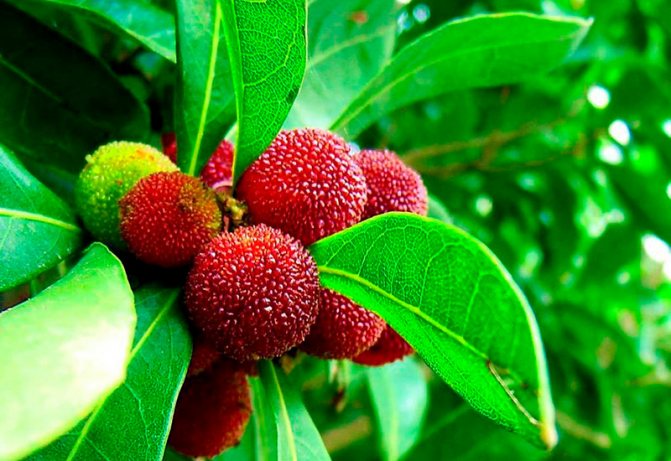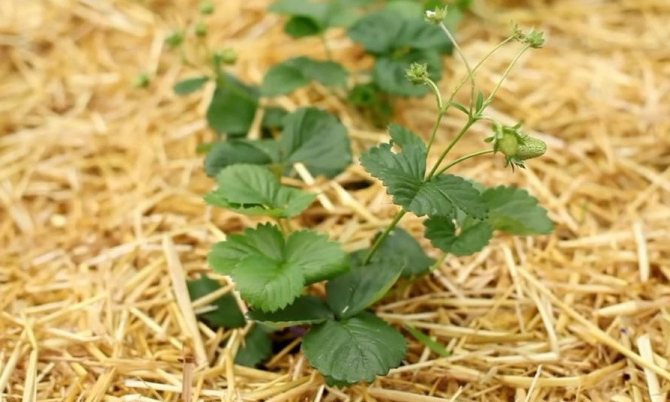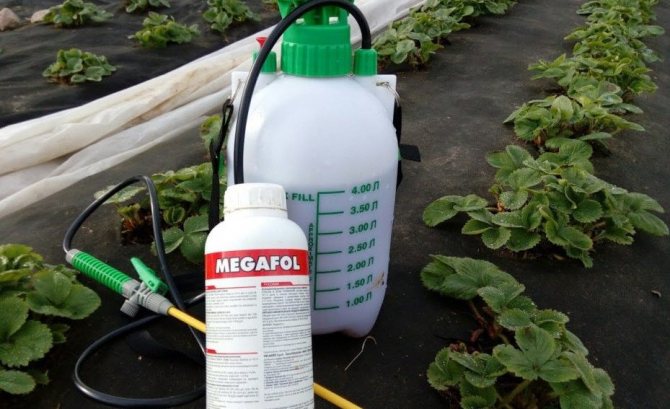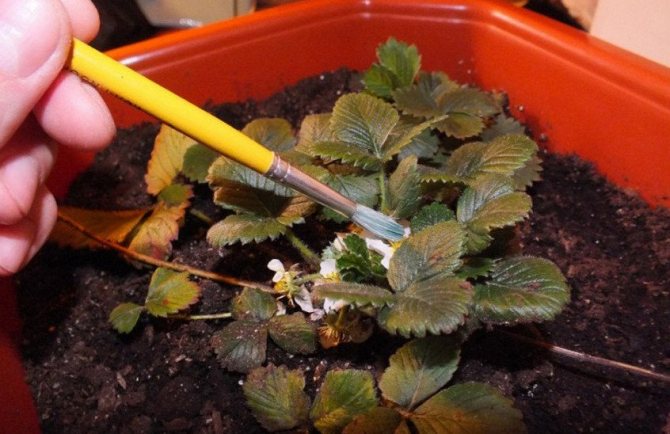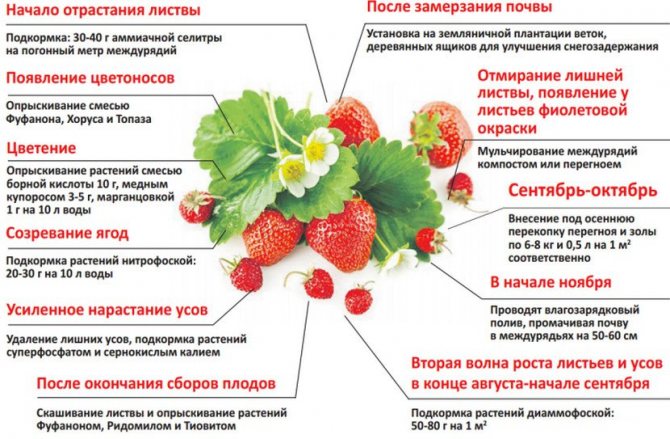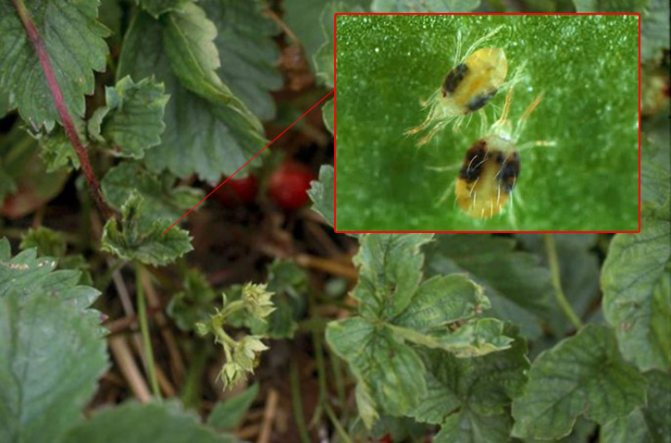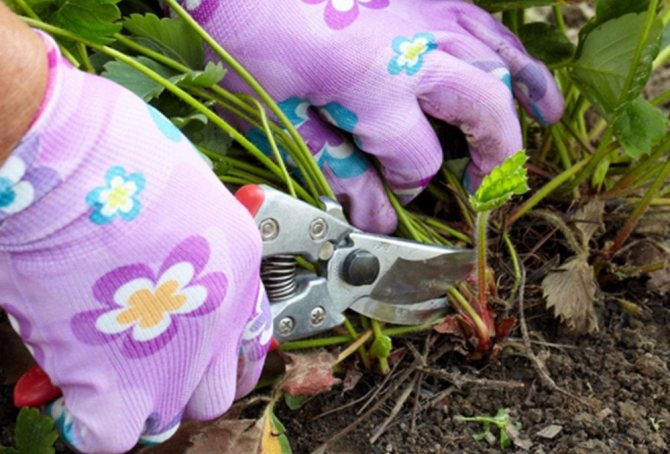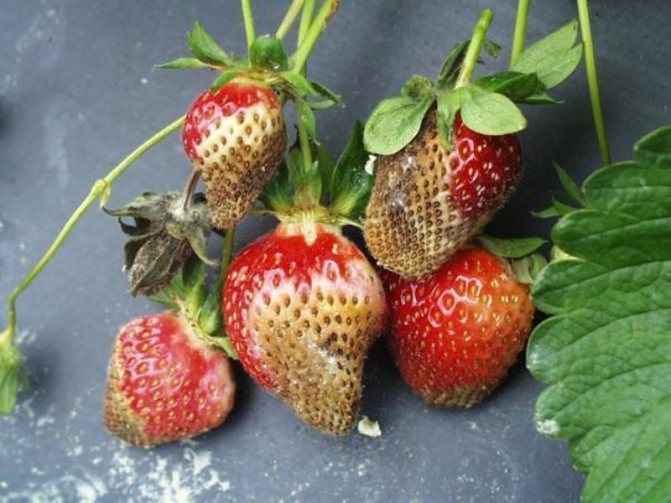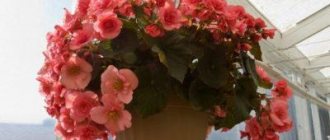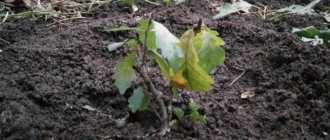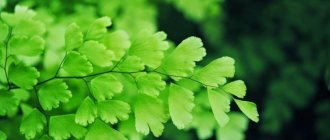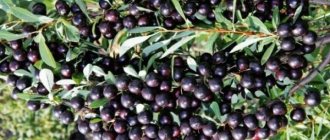Any kind of strawberry can be planted in a planter, and it will soon throw away the mustache hanging down. But only ampelous varieties will give rosettes on these mustaches, which will begin to bloom and give berries. To do this, they do not need to take root in the ground - they will feed on the mother plant, releasing their own mustache with fruit-bearing rosettes. This is basically what differs from the usual types of ampelous strawberries, the care and cultivation of which are described in the article.
Vertical planting of ampelous strawberries

Features and benefits of ampelous strawberry varieties
Strawberries have several differences, which are their benefits:
- strawberry ampelous on antennae and peduncles bears fruit;
- almost all varieties are remontant, which means that the crop can be harvested during the entire growing season;
- there are subspecies that can be planted vertically. Such plants can be grown in apartments in pots and pamper yourself with delicious berries all the time;
- ampel berries can be planted in partial shade, they will feel comfortable in low sunlight.
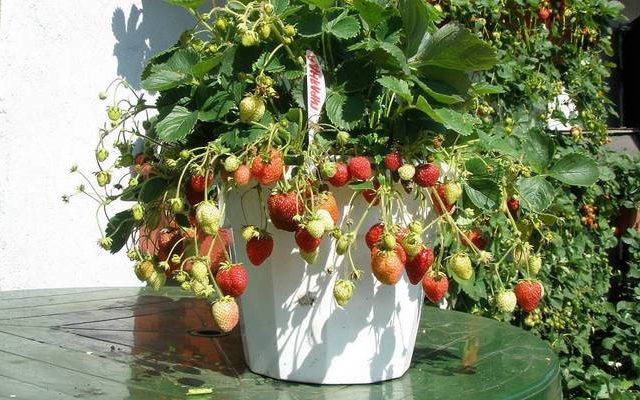

Unusual strawberry is not only a very tasty berry, but also a bright plant in the garden
For your information! Many people perceive the ampelous appearance of strawberries as curly, but this is not entirely true. By itself, the plant will not trail, it needs to be tied and shaped.
Open ground transplant
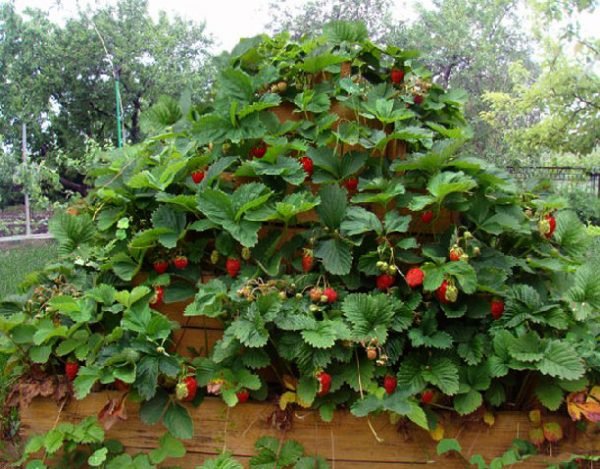

Strawberries in a high bed
Planting ampelous strawberries in an open place is carried out at the same time as transplanting into decorative containers, but first it is important to correctly determine the place for the plant. The best option is a plot in the southwestern part of the garden or vegetable garden, which is well lit by the sun and ventilated, but without strong winds and drafts. The place should be on a small elevation - if there is none, you can build high beds with your own hands.
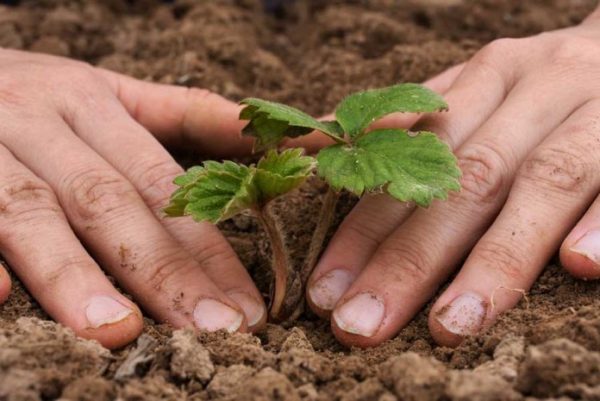

Curly strawberries are planted separately from other crops
Special requirements are imposed on the soil - its acidity should be in the range of 5.7-6.2 pH, and the depth of the groundwater is about 80 cm.If the soil is too wet, it is recommended to drain it - an excessive amount of moisture will cause plantings to hurt and can quickly die.
The bushes are planted at a distance of 30-35 cm from each other, after which they need to be slightly dug in with earth and watered abundantly. If there is intense heat outside during planting, the planting should be protected from the sun for about a week. When growing ampelous strawberries in the open ground, the antennae can be allowed to creep freely along the surface of the ground or tie them to a lattice structure or fence.
Attention! The ampel type of culture cannot be planted next to an ordinary garden one, since these crops are poorly compatible with each other.
What is ampelous strawberry
Ampel strawberry, the care and cultivation of which is quite simple, is one of the subspecies of strawberry obtained by selection. Description of culture:
- antennae are compact, their diameter is from 20 to 30 cm, length is from 50 cm to 1 m;
- the flowers are white, but there are subspecies that bloom pink.
Barberry Natasha - variety description and cultivation
The antennae grow abundantly and spread along the ground, which gives the impression that the plant is twisting.Berries are present on the bushes during almost the entire season.
Note! Growing strawberries in your home environment on the balcony allows you to harvest all year round.


Strawberries can be grown not only in the garden but also indoors
Description of Ischia: short and to the point
Ischia strawberry bred in 2005, S. Giuseppe di Comacchio Ferrara, Italy. Parent forms - CIVR130 x number form O2N2-19. The variety was tested in many continental parts of Europe during the period 2006-2010.
Some features of the variety - yield, disease resistance, can vary depending on the natural and climatic conditions, on the cultivation agricultural technology. Full remontant (neutral daylight hours), fruiting time - from June to October. First harvest 38-35 days after flowering. At the request of the originator, the yield of 800-1000 g is average for remontants. However, according to reviews, you can get higher rates with intensive cultivation technologies.


In the photo, Ischia strawberries, late August, the first year of planting (frigo seedlings)
- Semi-spreading bush, medium height - up to 30 cm with width (diameter) up to 40 cm, strong growth force.
- Peduncles are long, up to 13-15 cm, located flush with the leaves or below, carry up to 10-12 berries.
- The flowers are large - the first up to 3.2 cm, the next up to 2.5 cm, the number of petals is 5-7. Pollinated well.
- The leaf is bright green, medium density, slightly wrinkled.
- The shape is dominated by a conical (elongated-conical), at the beginning of the season and at the end there are fruits of not quite regular shape. Seeds are yellow-green, not sunken - flush with the skin. The berry is bright red in color, with not very strong, but sufficient gloss. The pulp is dense, homogeneous, orange-red, with minor inclusions of white core fibers. The average weight of berries is 20-30 g - large, but in a relative of Murano it is often larger.
- It multiplies quickly, gives a sufficient number of new outlets. The seedlings take root well.
- According to the originator, the variety is moderately sensitive to anthracnose and powdery mildew.
Advantages:
- A dense sweet berry with a homogeneous, dense pulp with high palatability, high sugar content and balanced amount of acids;
- Long collection period, a large number of fruits - many peduncles, each up to 10-12 pcs .;
- Good product transportability.
Cons:
- at high temperatures prone to anthracnose; The average yield for remontant plants is from 800 to 1 kg per bush;
- Not quite the correct shape of the berries - not uniform in the total mass. For small-scale production, fresh market varieties with more even berries are preferable;
- Unlike Murana, according to reviews, in regions with a dry hot climate it will show itself not from the best side: it is less productive, less resistant to drought, high summer temperatures.
About growing and care: nuances
The recommended planting at a distance of 30 cm between plants, if desired, can be expanded to 35-40 cm. It makes no sense to increase the feeding area anymore. It should also not be strongly compacted: plants that give a lot of whiskers will suffer from thickening. With a line planting, it is more convenient to organize the beds in 2 lines (stripes).
With a four-lane planting scheme, which is often more convenient and economical in terms of water consumption, covering material and space, plantings are difficult to work with. It is difficult to perform the usual manipulations: pruning, transplanting, foliar feeding, since the wide bushes are quite sprawling. Balancing between the rows, the gardener will have to show a truly acrobatic skill!
As with most neutral day varieties, fruiting peaks 2-3 years after planting. At 4-5, plantings should be updated - given the excellent formation of seedlings, there will be no problems with planting material in the form of your own seedlings.On industrial plantations, cultivation is practiced in a one-year culture - Dutch technology to help.
It is rational to root young rosettes of the first order in a glass - as a result, we will get a well-formed root system, the outlet will not take power from the mother bush. Separate the rosettes with 5-6 leaves.
If you are planting seedlings in the spring, cut off the first peduncles, or better, cut off the flowers: direct the forces of the plant to the formation of the root system and the aerial part.
Interesting facts about strawberries and features of varieties
Barberry - popular varieties, description
The ampel view is considered one of the most delicious. In addition to the great aroma of berries, which are preferable to use in cooking, they are very healthy:
- have a minimum calorie content, but at the same time they are well saturated, due to which they are recommended to be consumed during diets;
- beneficial effects on health: normalizing blood pressure, improving the functioning of the digestive system, accelerating metabolism, increasing muscle tone;
- providing wound healing and disinfecting action;
- strawberry extract is one of the ingredients of many cosmetics - masks and lotions, soaps, tonics.
The ampel type of berry is much tastier and more aromatic than other varieties of strawberries.
Which variety to choose
There are many varieties of ampelous strawberries, but for cultivation in indoor conditions or in the garden, it is better to choose those that are immune to disease and resistance to other negative factors.
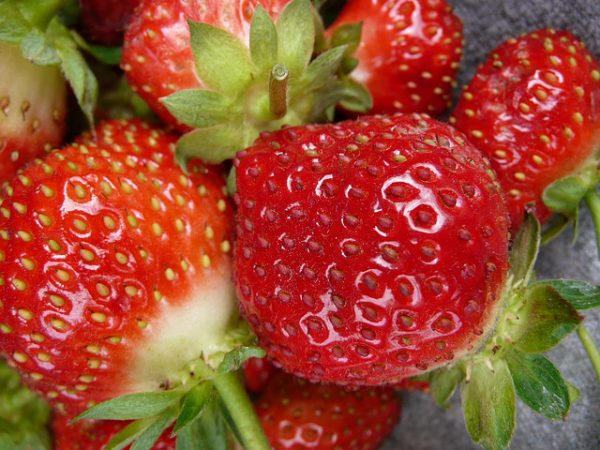

Queen Elizabeth II is a favorite cultivar of gardening fans
Table 1. Common varieties of ampelous strawberries
| Plant variety | Features of the |
| Tuscany | A young plant variety that in a short time managed to win the love of gardeners from all over the world. These are small, compact bushes that reach a height of 30 meters, but young shoots can grow up to a meter. Most often, plants of this variety are planted in open places, but it can successfully grow in decorative containers. Its main feature is a high yield and tasty fruits of a deep red hue. |
| Queen Elizabeth II | A powerful and sturdy plant that is not susceptible to temperature extremes, diseases and the influence of other negative factors. The berries are juicy, sweet and relatively large - each of them can reach a weight of 40 g, while on average the fruits of a plant weigh no more than 30 g. During the season, the variety can yield 2-3 times, but it needs to be replanted every year and a half. |
| Homemade delicacy | Representatives of this variety are decorative varieties, so the fruits are not too large, with a slight sourness. It is well suited for growing as a houseplant. It looks very elegant - bright red berries stand out in the mass of green leaves. |
| Cletter star | A type of curly strawberry, which was obtained by breeders from Holland. It is a small bushes with high inflorescences, which, after the appearance of berries, fall under their weight. The fruits of this variety are large enough - each of them can reach a weight of 60 g, have an intense red tint, juicy pulp and intense aroma. |
| Geneva | Hybrid variety with long stems, large enough (about 40 g) berries, which have a cylindrical shape and sweet tight flesh, so they can be easily stored and transported. Geneva has excellent yields - you can get a three-liter jar of berries from one bush. |
| Fresco | Small, compact plants that bear fruit from early summer to September. Many small flowers are formed on the bushes, which give a large harvest. The berries are quite small (weight about 20 g), with a sour taste and a pleasant smell. The variety is resistant to destructive factors and many diseases. |
Advice! To get a rich harvest of climbing strawberries, it is better to plant several varieties at once, which will bear fruit at different times.
Growing options
Barberry Rose Glow - variety description and care
Planting is done through seeds or seedlings.
Important! After the first flowering, the lower leaves and buds are cut off.
The best varieties of ampelous large-fruited strawberries for growing
The ampel type of strawberry is presented in many varieties, but only a few of them are popular among gardeners:
- Rikla. Early fruiting, single. The berries are very sweet and large. The height of the bush is average. Leaves are light green. Antennae are long, their number is small. The petals are white. Average berry weight is from 20 to 25 g;
- Elsanta. This is one of the most productive subspecies. 1 bush gives up to 2 kg of strawberries. The first berries have a light tip;
- Tarpan. The height and diameter of the bush is no more than 30 cm. Antennae are long, up to 1 m. Tarpan has a high yield. The shape of the fruit is elongated and conical;
- Victoria ampelnaya is a common variety with large fruits. The variety has high frost resistance, but the berry is sensitive to spring frosts. Loves abundant and regular watering. Disadvantage - the harvested fruits have a minimum shelf life;
- Temptation. Low, dense bushes. The peduncle is large, the berries are large in the shape of a cone. The aroma has notes of nutmeg. Temptation is a frost-hardy strawberry that does not tolerate drought and heat. It is recommended to plant it in a place where there is no direct sunlight;
- Delis. A new subspecies, bred by agricultural technicians in 2020, 1 bush gives up to 1.5 kg of yield. The shape of the fruit is round, large, with a distinctive aroma;
- Laurent. Blooms and bears fruit very early. The leaves are dark green. Fruiting from mid-June until the first frost. The ideal option is to grow ampelous strawberries in pots.


White inflorescences look very beautiful in the garden among other decorative flowers.
Advantages and disadvantages
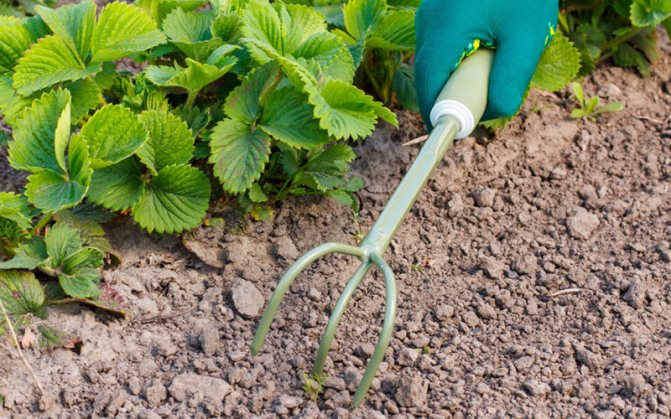

Slowly but surely, ampelous varieties are gaining the favor of gardeners. Culture is valued for its many virtues:
- long-term return of berries (remontability);
- high yield rates;
- large fruits;
- excellent taste, sweetness;
- unpretentiousness;
- the possibility of growing at home;
- decorativeness. Even if it did not work out to grow berries, lush green bushes with drooping mustaches in the interiors and on the site look very beautiful.
There are few disadvantages:
- for all its unpretentiousness, the culture is still very demanding on the fertility of the soil. On poor soils (substrates), one should not expect a bountiful harvest and large berries;
- the requirement for regular rejuvenation of plantings (preferably every 2-3 years);
- it is impossible to take seeds from hybrids for subsequent reproduction.
Ampel strawberries with pink flowers: care and cultivation
Almost all varieties of strawberries are easy to care for and unpretentious.
Strawberry varieties with pink flowers
You can grow strawberries outdoors and in flowerpots. But if the berry is to be kept as a houseplant, it needs to be fed regularly. The most common varieties:
- Enchantress. A large-fruited variety that is recommended for growing at home and in the garden in flowerpots. In the open field it bears fruit all season. The fruits are sweet in the shape of a cone;
- Pink miracle. It is an early ripe hybrid with high yields and a long fruiting period. The berries are sugary, very sweet;
- Pink flamingo. It is a house plant that is recommended to be kept in flowerpots. The berry is bright scarlet, large;
- Novel. The flowers are light purple, the shape of the fruit is drip, the color of the berries is red;
- Tuscany. Tuscany is a novelty among garden crops. Small bush, no more than 15 cm high;
- Eternity. Ripens early, crimson flower stalks. The berry is oblong, burgundy;
- Tristan. It is a hybrid subspecies with a juicy sweet berry;
- Gazana. Indoor plant with bright crimson flowers.
For your information! The berry of short daylight hours is a subspecies of the common strawberry, which yields a harvest in spring and early June. She begins to lay the kidneys when the day decreases.
You can make the best strawberry fertilizer yourself. Structure:
- superphosphate - 180 g;
- boric acid - 40 g;
- copper - 1 g;
- ammonium nitrate - 30 g;
- potassium permanganate - 20 mg;
- zinc - 2 g.
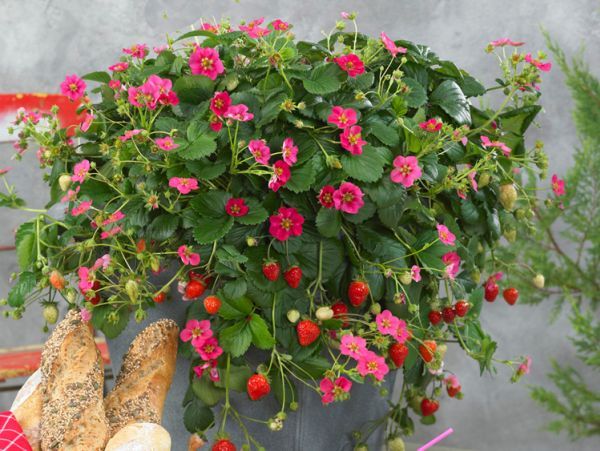

The delicate color of strawberry petals always attracts attention.
The ingredients are mixed in 10 liters of water. This amount of solution is enough to feed 50 bushes.
Pink flowers of decorative strawberry | | Your 6 ares
Along with decorative apple, plum, cherry, currant, there is also decorative strawberry. When creating varieties, breeders aim first of all to get plants with beautiful flowers that bloom at certain times, while the harvest remains in the background.
In Europe, landscape designers have long been using decorative strawberries to decorate flower beds, rockeries, paths.
In the assortment of decorative strawberries there are varieties with flowers of red and white color, but varieties with pink color prevail. Let's talk about some of them.
The leader in decorativeness is considered to be the Pink Panda variety, obtained in England as a result of crossing Chilean strawberries and marsh cinquefoil. It is a semi-shrub about 15 cm high, up to 60 cm in diameter. The leaves are small, glossy, dark green, bright pink flowers with a yellow center. The first wave of abundant flowering occurs in the spring, then declines and resumes in the fall. There are not many berries tied, they are small, but edible and tasty. The variety forms a mass of whiskers, at the ends of which rosettes of leaves appear, which, in contact with the soil, take root. It grows in any garden soil, in the sun and in partial shade, quickly covering the ground. Moreover, for 1 sq. m it is enough to plant 5 plants.
Ornamental strawberries fully reveal their beauty in sunny places.
It is advisable to maintain moderate humidity throughout the season, avoiding overdrying and waterlogging of the soil. Like all decorative strawberries, it has a positive attitude towards feeding, but you should not get carried away with nitrogen fertilizers, otherwise the flowering will not be plentiful. And at the end of August - September, it is better to exclude nitrogen from fertilizing so that the plants are better prepared for wintering.
Pink Panda strawberries go well with perennial flowering plants in flower beds. It is used to decorate shrub groups, looks good in containers, in hanging pots. A wonderful honey plant.
The Lipstick variety is a hybrid between pineapple strawberries and cinquefoil, created in 1966 in the Netherlands. Against the background of juicy green leaves in late spring - early summer and again in autumn, bright, darker flowers than the Pink Panda variety are formed.
Prefers sunny locations. In regions with hot climates, it is better to plant in partial shade for longer flowering. Adapts to any soil, but loves humus-rich with a neutral reaction. For abundant flowering, it is necessary to promptly remove wilted flowers and ovary. IN
otherwise, the plant fades quickly. Strawberries are quite tolerant of drought, although they achieve greater decorativeness with timely watering. To limit overgrowth, the mustache is removed.
Propagated by a mustache. The strongest are the rosettes located on the whiskers near the mother plant, they should be used for planting first.
Excellent groundcover, good for turfing between bushes.
The new remontant hybrid of F1 strawberry Tuscany is distinguished by its extraordinary decorativeness. It is a low plant (up to 15 cm) with dark green shiny leaves, dark pink flowers and bright cone-shaped berries.
The plant forms a large number of flowering whiskers, which take root easily, while gradually forming a dense carpet covered with flowers and fragrant berries. With good care, up to 1 kg of medium-sized berries with a dessert flavor can be harvested from one specimen. The hybrid is highly resistant to frost and drought. Reproduces by the traditional method - daughter rosettes formed on the mustache.
Due to the almost continuous flowering, long peduncles and unusual color of flowers, plants look great in hanging baskets and pots, they are used to decorate a loggia, balcony or veranda.
Proper care and cultivation of remontant ampelous strawberries
The main condition for obtaining a regular harvest is proper plant care.
You can grow strawberries from seeds or seedlings.
How to plant ampel strawberries correctly
The seed method quickly produces many strong seedlings, which can bear fruit already in the current season if properly cared for.
The advantage of this method is that it reduces the likelihood of various diseases, because they are not transmitted through seeds. Seed planting is carried out in January, the latest date is the first days of February. Step-by-step algorithm of actions:
- Land preparation. Strawberries need loose soil that allows air to pass through well. It is recommended to use peat soil, adding coconut fibers to it. A thin layer of sand is poured onto the ground from above.
- Grains are laid out on the sand. The best method is to sprinkle snow on the grains. The snow will begin to melt, the water will soak into the ground, dragging the grains along with it.
- The container is covered with polyethylene or a piece of glass. Placed in a bright room with a temperature of up to 25 ° C.
- Every day, the ground needs to be aired, removing the film from it for 15-20 minutes.
The first bushes will begin to break through in a week, but later germination is not excluded, after about a month. The container with young shoots should be placed in a well-lit place.
Important! The kernels should not be harvested from hybrid strawberry varieties, because the grown plant may not retain the characteristics of the mother bush.
How to plant seedlings
A month after pecking the seedlings, a pick is made. Each bush must be placed in a separate container. But picking is possible only after the appearance of 2-3 full-fledged sheets.
You can plant strawberries in open ground in May. Previously, the berry must be fed with complex fertilizer or manure, which is mixed with wood ash.
The distance between the holes is from 15 to 25 cm.
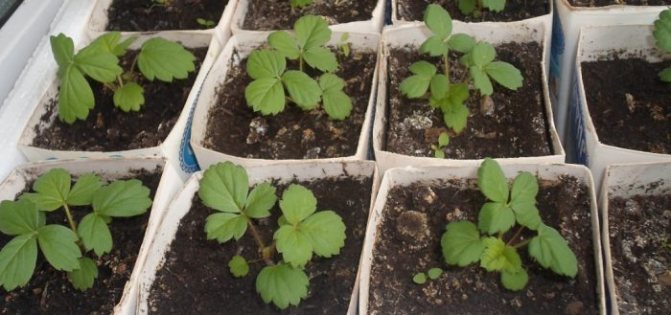

It is best to use strawberry seedlings
Watering and fertilizing
Proper watering is one of the key factors for the successful development of the plant and obtaining a stable harvest. The ground should be well moistened, but not flooded. Do not allow the soil to dry out.
Note! In order for the moisture to constantly feed the bushes, it is recommended to use a hydrogel, which is laid in the ground during the planting of shoots.
Top dressing should be regular so that strawberries bear fruit during the growing railing. If the berry grows in the open field, organic feeding is used. Complex mineral fertilizer is suitable for plants in flowerpots.
Care features
Strawberries of ampelous varieties require some care.
1. You should constantly monitor that the soil in the pots with bushes does not dry out. In especially hot periods, watering the strawberries can be carried out 2 times a day, and once a week, the bushes can be bathed, completely immersing the pots in a container of water.
2. It is recommended to feed strawberry bushes with potassium-phosphorus solutions every 2 weeks. An ash solution or liquid organic fertilizers can be used as fertilizers. Nitrogen fertilizers should be used in limited quantities to prevent strawberries from spreading to the foliage.
3.For lesions by slugs, beetles and flower beetles, strawberry bushes should be watered with a solution of ammonia - 20 ml per 5 liters of water.
Advice! Strawberry pest control should be carried out at least 10 days before harvest.
4. When growing ampelous strawberries indoors, manual pollination should be carried out.
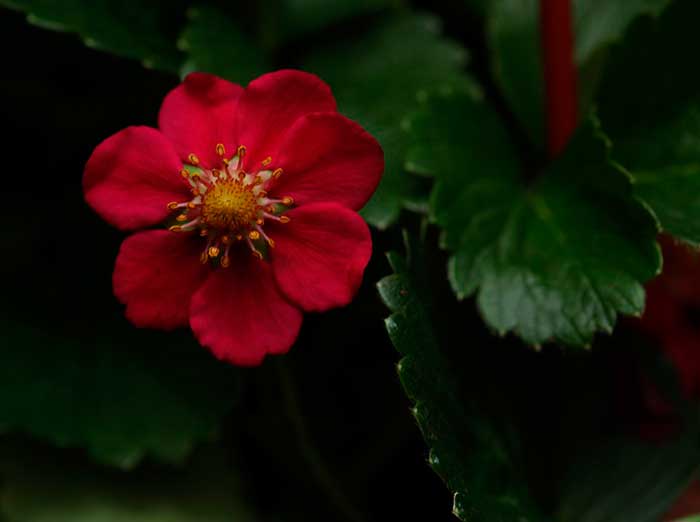

Ampel strawberries need regular watering
5. It will increase the qualitative and quantitative indicators of productivity by removing the first peduncles, as well as tracking so that there are no more than 5 shoots on one bush, and remove the extra ones.
6. For the winter, strawberry bushes growing in the beds should be covered with any covering material - film, needles, foliage. If the shelter for the winter was film, with the arrival of spring, it should be removed in order to prevent the plants from overrunning.
Planting ampelous strawberries in pots
There is not much difference in action between planting in open ground or pots. But a special requirement is put forward for the quality of the land. The composition of the soil includes the following substances mixed in equal parts:
- peat;
- leafy land;
- sod land;
- humus.
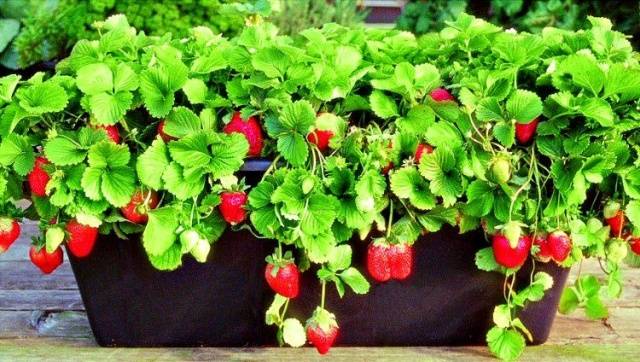

Strawberries in flowerpots - unusual and bright decor
A little river purified sand is added to the mixture. To keep moisture longer, a little hydrogel is poured into the ground.
Drainage is placed at the bottom of the flowerpot - pebbles, expanded clay or charcoal. The volume of the container is selected on the basis that 1 bush requires 1.5-3 liters of nutrient soil.
Note! The bushes do not go deeper. The growth point in the middle of the bush should be above the ground.
How is it grown?
Apel-type strawberries are grown in different ways - in pots, pots, vases, vertical cassettes, pyramids. The latter are built from any available means - barrels, pots, etc. This culture is also used to decorate lawns, forming bushes into trellises.
The plant looks great in winter gardens, on balconies - you can make a continuously fruiting arch from it. Bushes can also be planted in open ground, but this growing method is used much less often.
Landing requirements
In order for the ampelous strawberry to grow well and bear fruit, it is provided with optimal growing conditions:
- light soils, drained, with neutral acidity (5.2-5.5 pH);
- 8-10 hours of a sunny day - in a too shady place, the culture may stop fruiting;
- lack of drafts;
- crushed green manures - nasturtium, mustard, rapeseed, phacelia are introduced into the soil used for planting.
When planting ampel varieties, you should not plant seedlings too deep and close to each other. If the planting is carried out in the ground, and even in early spring, then it is important to prevent it from freezing on the soil by covering it with a film or other covering material.
Planting methods and instructions for them
Seedlings are usually planted in April-May or August. Ways of growing ampelous strawberries:
- In pots. For planting, such a capacity is selected so that one adult plant has 1500 cubic meters. see soil. Next, they begin to prepare the substrate, it is prepared from sand - 1 part, sod land - 3 parts, peat - 6 parts. To improve fertility, the soil is fed with organic matter. You can also buy ready-made primer - in a specialized store. In order for the seedlings to take root as soon as possible, they are removed before planting in a dark place, dug in the ground. There are no special requirements for the pot, the main condition is a height of 30 cm. Holes are made in the bottom so that excess water flows out. Further, the order of planting: A thin drainage layer is laid on the bottom of the pot. Expanded clay, pebbles, broken brick will do. The prepared soil mixture is laid on top.
- The seedling is immersed in a container - the roots should be placed vertically, and sprinkled with earth.
- Seedlings planted in pots are watered abundantly.
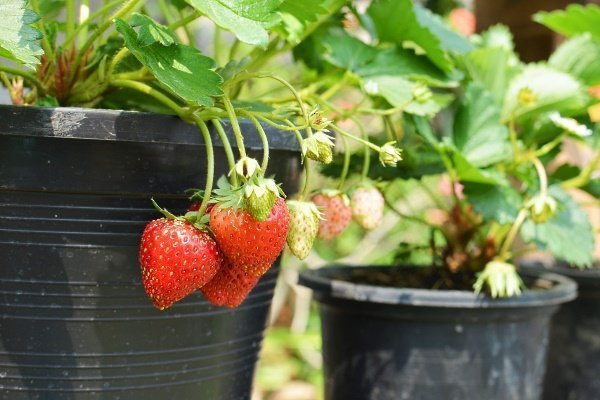

method of growing ampelous strawberries "in pots"


cultivation of strawberries "on the grid"
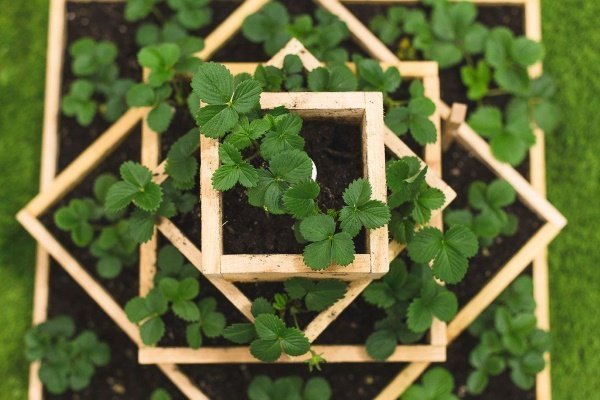

planting strawberries in "pyramid" beds


"Vertical beds" (growing strawberries in bags)
Suppose you decide to plant strawberries in 3L pots with further cultivation in a greenhouse. Work order:
- Place pots with a height difference of 70-80 cm. If the height of the greenhouse is about 2.5 m, 3 lines of strawberries will fit in it. The intervals between adjacent pots are 40 cm.
- The greenhouse is equipped with drip irrigation.
- The optimum temperature in the greenhouse is 19-25 ° C. At higher temperatures, full pollination does not occur.
- When the plants bloom, the greenhouse is opened - for better pollination of non-self-fertile varieties. If the varieties are self-fertile, then in the greenhouse it is necessary to constantly maintain high humidity - at a level of 90%.
If the area of the greenhouse is 1-2 acres, then the total yield will be 5 buckets, which is half as much as when growing ordinary strawberries.
Diseases and pests: control and prevention
Strawberries are often attacked by insects. The berry is attacked by nematodes and strawberry mites. Signs of the appearance of ticks are wilting of leaves, a decrease in the size of berries. For the destruction of insects, drugs are used:
- actellik;
- fufanon;
- Nero.
Processing is carried out three times with an interval of 1 to 1.5 weeks. If the treatment does not work, the bushes need to be dug up and burned.
If the fruit has become tough, and the stem is dense, then the strawberry has become a victim of a nematode. There is no cure for this parasite, all bushes are destroyed.
From diseases, the berry is susceptible to fungus. Its treatment consists in treatment with fungicides.
Prevention of diseases and pests is regular, proper care, feeding, treatment of bushes in autumn and spring with Bordeaux liquid, which is a mixture of copper sulfate and milk of lime.
Reproduction methods
Reproduction of ampelous strawberries is practically no different from the usual.
Sowing seed into the ground
Taking into account the biological rhythm of plants, the best time is February or March.
The prepared soil is watered, and then the seeds are scattered and lightly pressed into the ground. Cover with foil or glass and set in a bright place.
Growing strawberries from seeds
Watering should be done with a spray bottle, so as not to deepen and displace the seeds.
At 15 ° C, seedlings appear in 12-14 days. After the appearance of the second true leaf, the seedlings dive.
Important! A seed covered with earth during planting may not sprout.
Rooting outlets
In May and June, rosettes from the whiskers that are closer to the mother plant are planted in prepared containers with soil. Set in partial shade for 10-12 days for early rooting.
When growing in an apartment, the usual care continues, consisting of watering, fertilizing, loosening and forming bushes. If you plan to create various types of beds in your personal plot, then after rooting, the bushes are left in the open air.Before frost, strawberries have time to grow.
Then the containers with the culture are removed to the basement, cellar or other dark and cold room and left without watering until March 1. In early spring, strawberries are brought into the house, but they are put on the windows only after 3-4 days. Observe a moderate watering regime. After two weeks, the plant begins to retreat. And after a month and a half, the strawberries are ready to bloom.
Note! The newest varieties and hybrids of large-fruited strawberries without mustache. Propagating them by dividing the bush is problematic and unproductive. Small-fruited crops can be renewed from their own seeds, and it is recommended to buy seedlings of large-fruited seedlings from nurseries.
Hybrids
Despite the fact that most of the diverse strawberry hybrids have unique traits, almost all of them have a similar shape, which unites them into a single group.
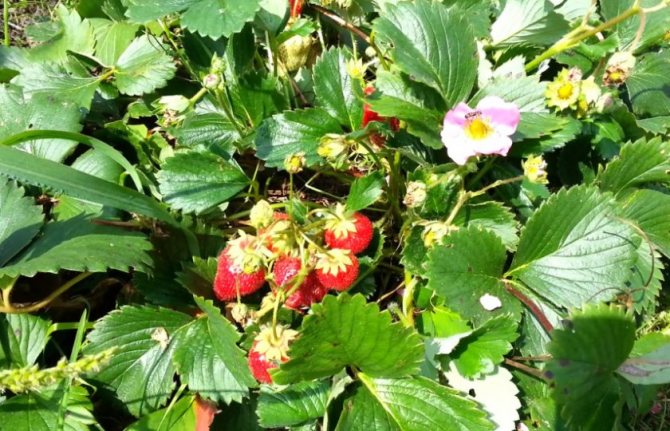

Such a morphological description is traditionally divided into several groups, which often gives a detailed idea of the plant.
Bushes
Almost all representatives of strawberries with bright red-pink flowers, they are quite compact in size. This is their main feature. Often, these strawberries are small bushes with an average height of about 15–20 cm.
Individual hybrids can grow up to 30 cm in heighthowever, this is only observed under optimal conditions. The bush itself is an elongated herbaceous petiole that grows from one common basal rosette. At the top of the petiole there is a large, rounded leaf, trifoliate, deep green in color.
Peduncles
During flowering, flowers form as separate formations on small peduncles. Thanks to this, they line up in a characteristic inflorescence, the so-called multi-flowered shield.
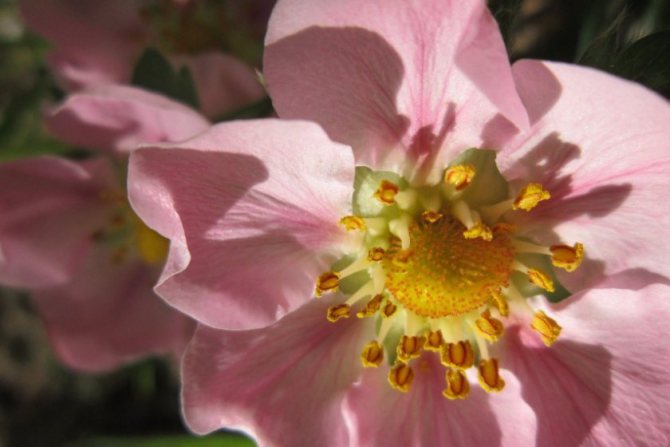

Flowers are often in bisexual inflorescences, consist of 5 small petals and are characterized by an increased number of pistils and stamens.
Berries
The fruits of strawberries are of a multi-root type. They represent an overgrown receptacle, which, as it matures, thickens to a fleshy and juicy pulp. On top of the berries, in small depressions, there are small seeds of a light brown color. The color of the fruit is almost always red, intense.



